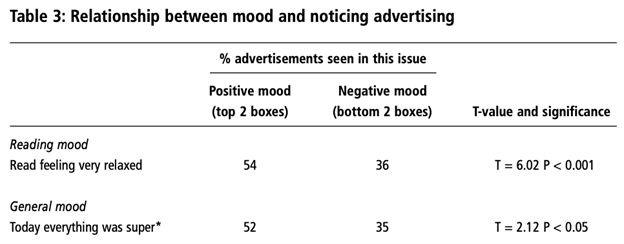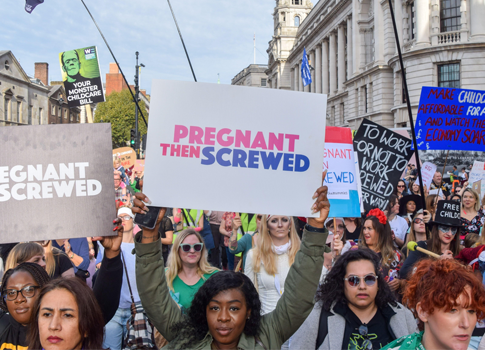#2 Importance of context: how people are more open to advertising when they’re in a good mood
The same message can have a markedly different impact, depending on the consumer’s mood. If you reach your audience when they’re happy it boosts the probability your ad gets noticed.
Evidence: In 2007, Fred Bronner, a professor of advertising at the University of Amsterdam, asked 1,287 participants to flick through a newspaper and then answer questions about which ads they remembered.
When the data was split by the readers’ mood, Bronner noticed that those who were happy recalled 52% of ads, whereas those who were unhappy noticed just 35%. And it wasn’t just happiness that mattered, stress levels were important too. Relaxed participants noticed 54% of ads, whereas those who were stressed remembered a mere 36%.

Results from Bronner’s (2007) study
Recommendation: Bronner’s data shows that audiences are more likely to notice ads when they’re in a good mood. Further research that I’ve conducted shows that there are other benefits to an audience being happy – they’re also more likely to believe ad claims.
So, your task is to try and target your audience when they’re happy. There are many potential tactics. Consider:
- Timing (e.g. it’s better to reach someone on a Saturday rather than a Monday)
- Activity (e.g. people are more likely to be in a good mood during an enjoyable activity, like a trip to the cinemas rather than commuting)
- Content (e.g. adapt the programming you reach people around, prioritising uplifting genres or editorial rather than downbeat content)






